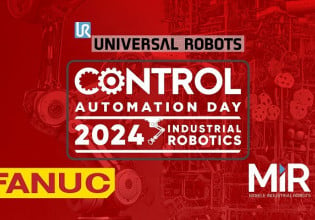Hi all,
When iPads were first introduced, there was a flurry of speculation about the potential for applying them in factory automation. Some applications mentioned include:
- Human Machine Interface
- Monitoring (including alarms)
- Data collection
At the same time, security concerns were expressed primarily because of their wireless connectivity.
We're a few years down the road now, so what are you seeing in actual application? Have you found ways to address security issues, or do you just limit the use of this technology to noncritical applications?
I love my iPad, but haven't started using it for much work-related activity.
Ken Crater
Control.com Founder
When iPads were first introduced, there was a flurry of speculation about the potential for applying them in factory automation. Some applications mentioned include:
- Human Machine Interface
- Monitoring (including alarms)
- Data collection
At the same time, security concerns were expressed primarily because of their wireless connectivity.
We're a few years down the road now, so what are you seeing in actual application? Have you found ways to address security issues, or do you just limit the use of this technology to noncritical applications?
I love my iPad, but haven't started using it for much work-related activity.
Ken Crater
Control.com Founder






